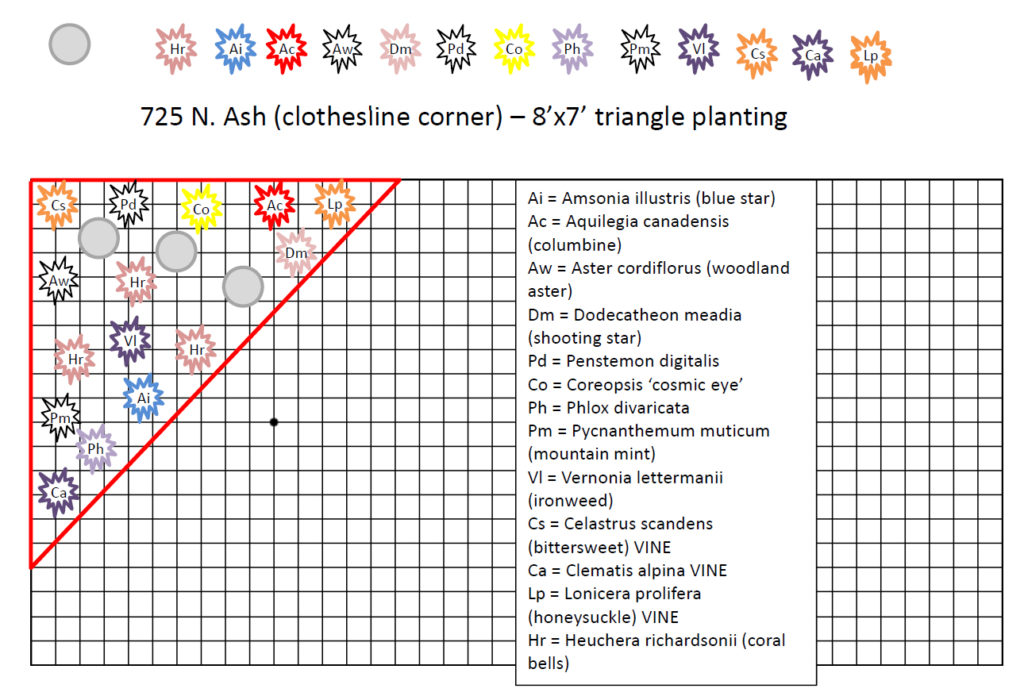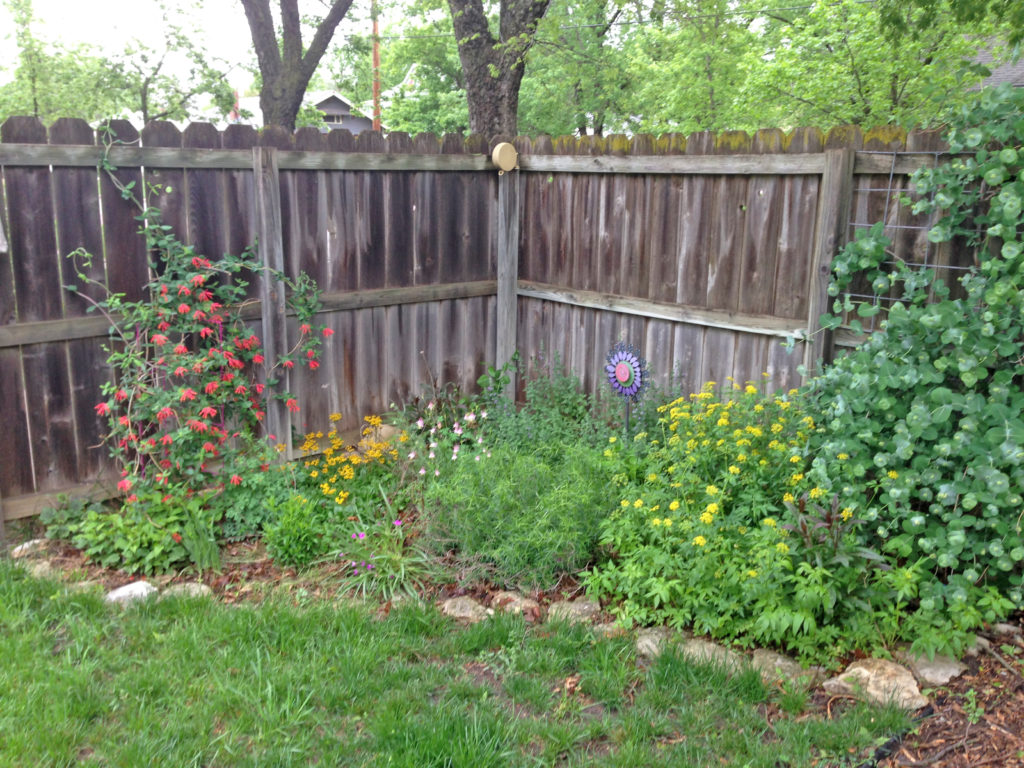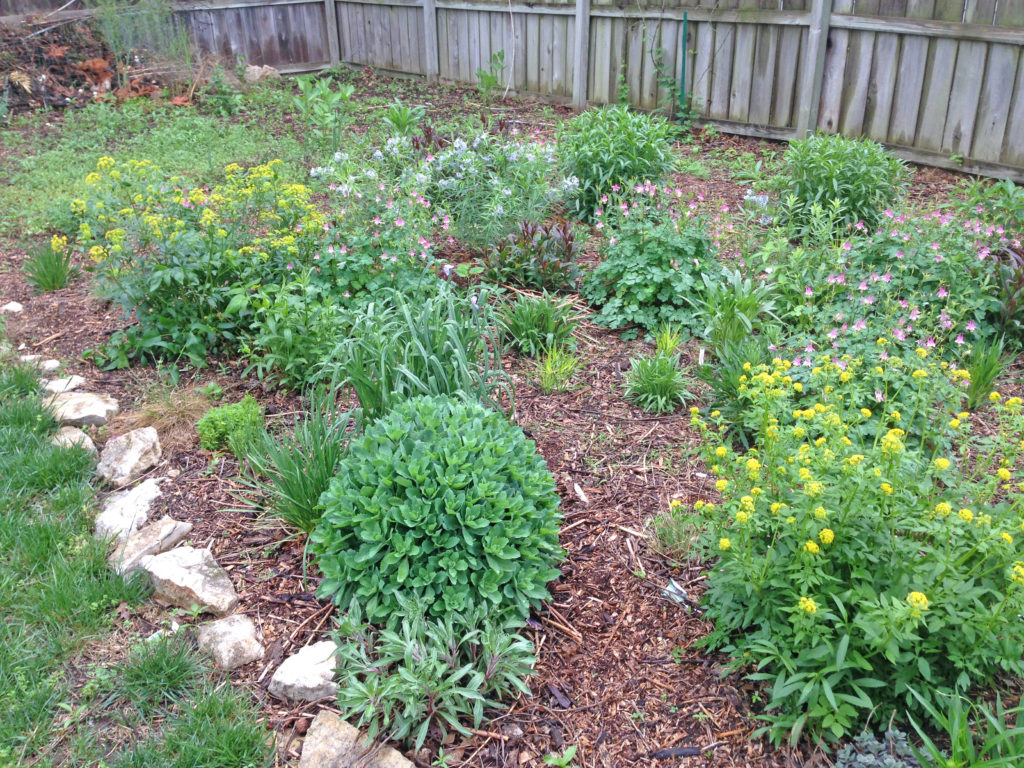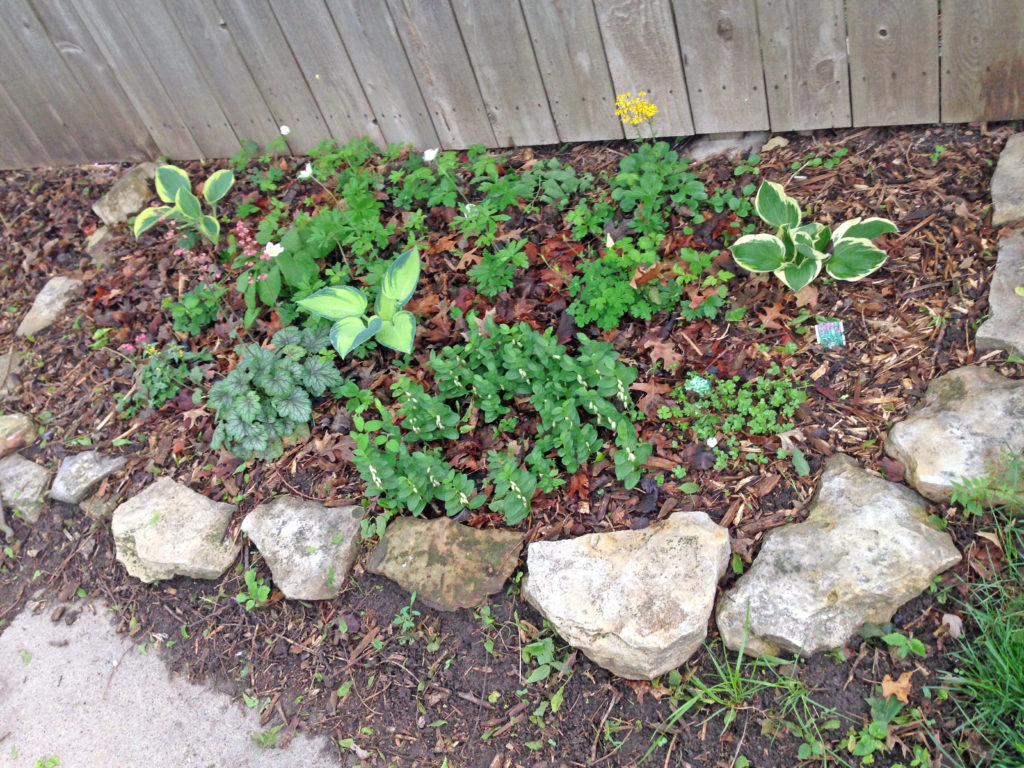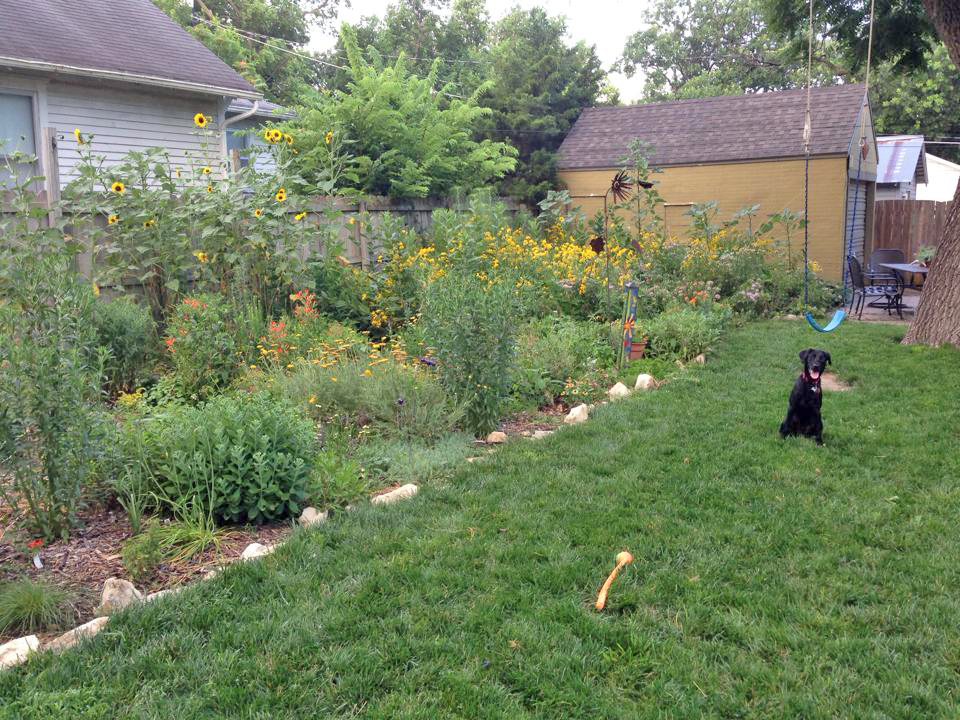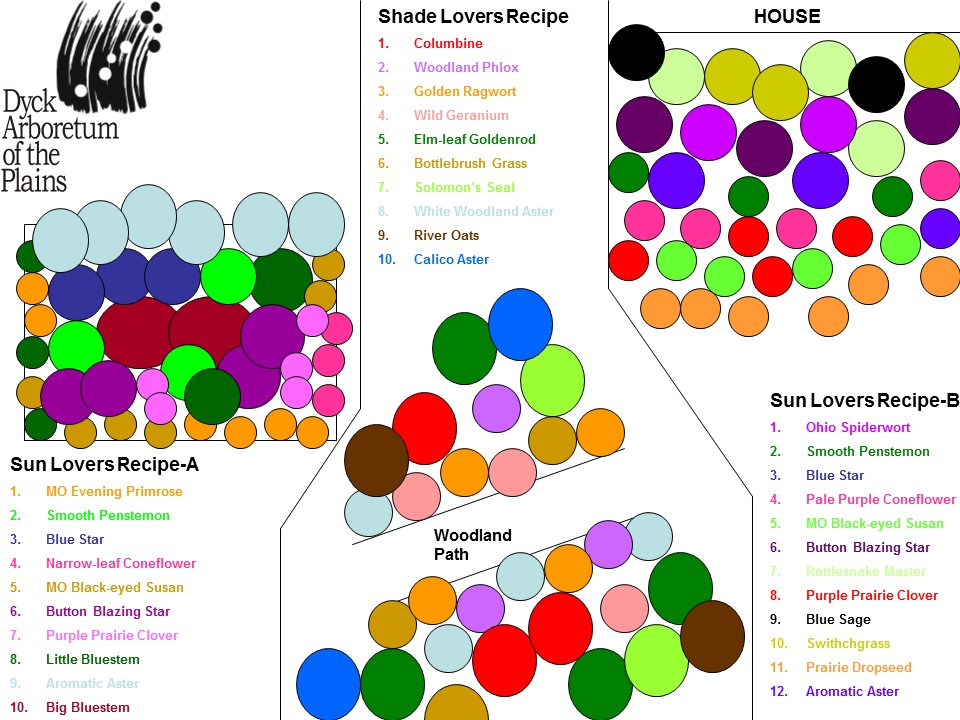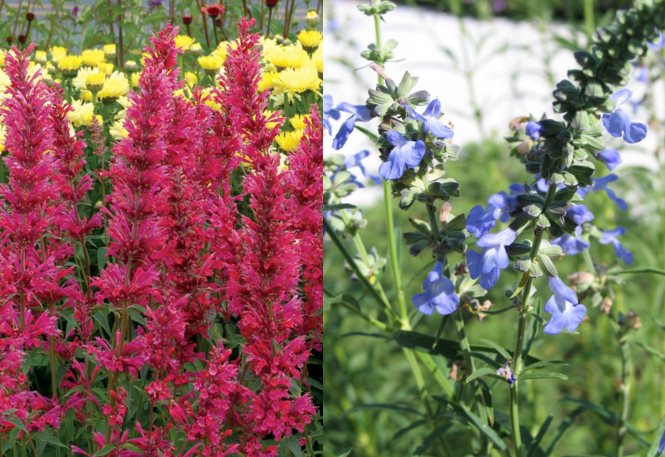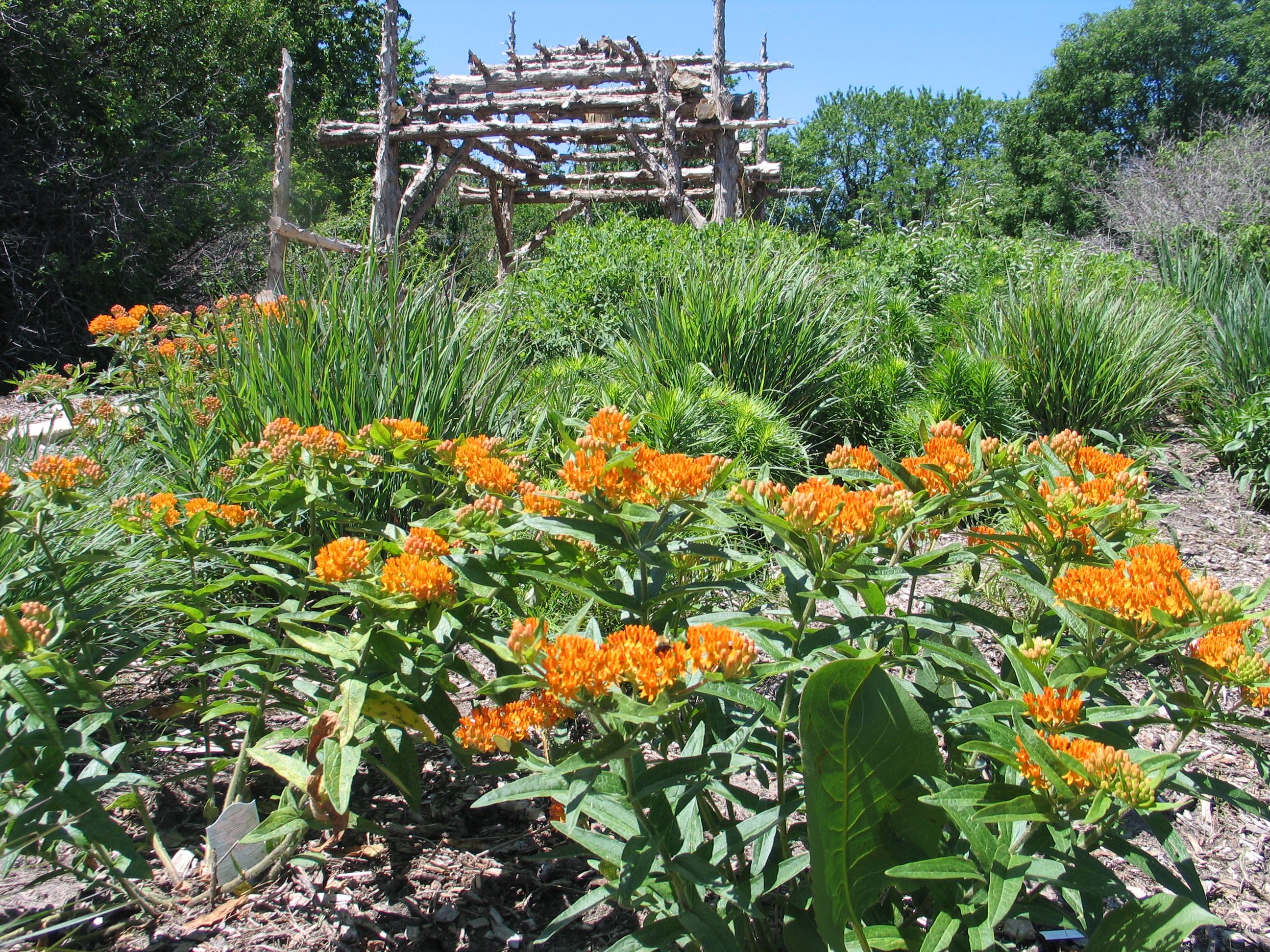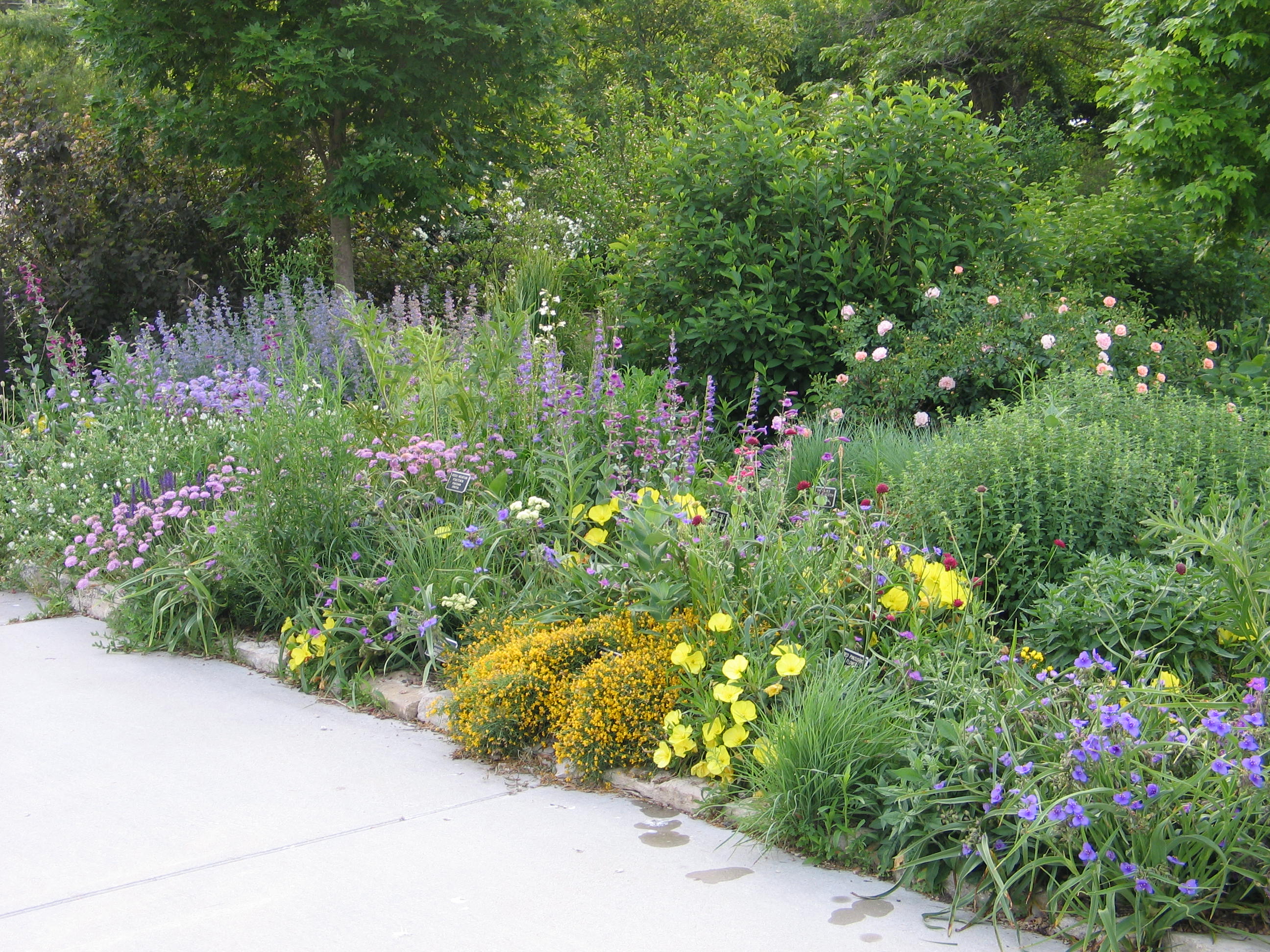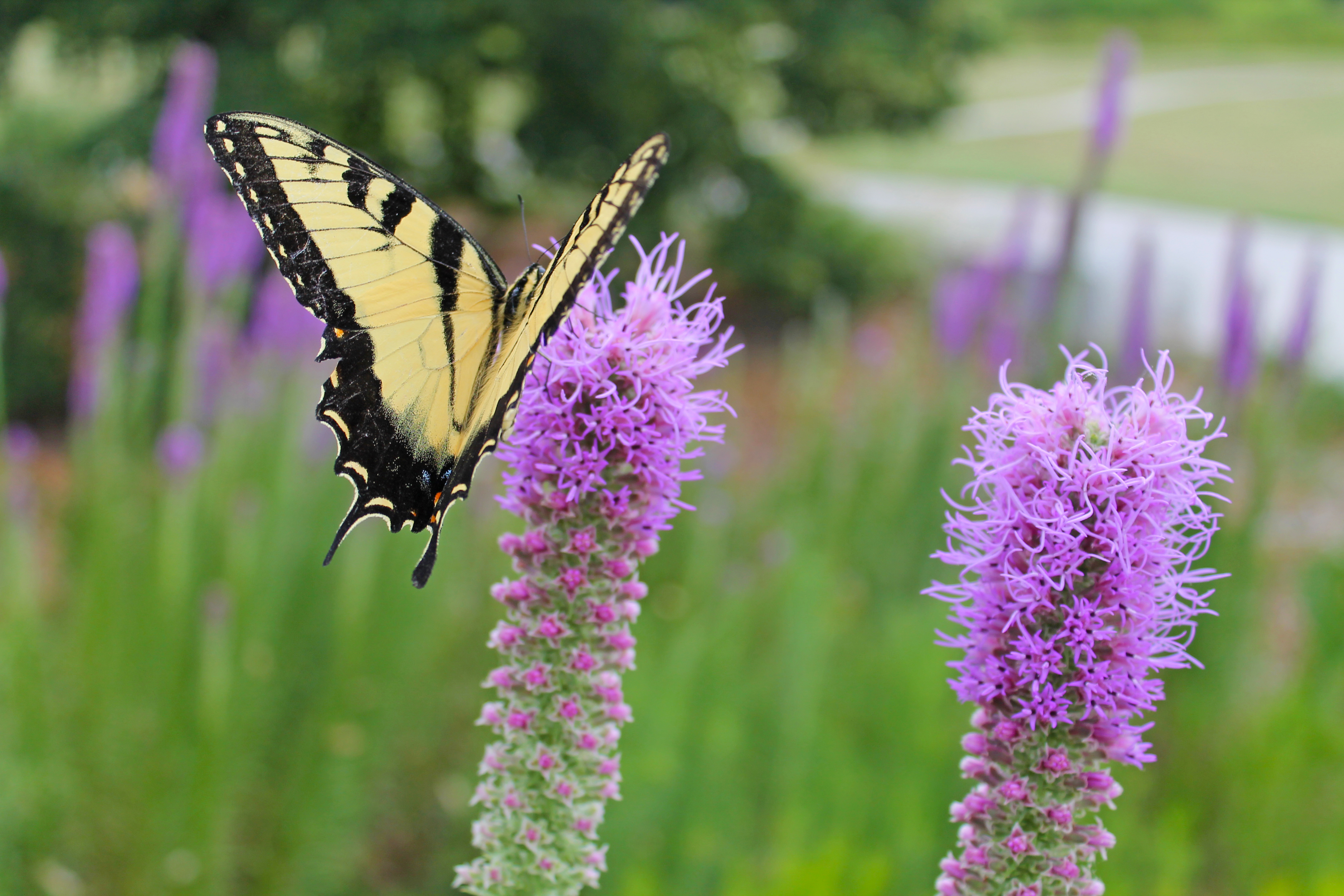I am an enthusiastic advocate for landscaping with native plants. I preach this message at our spring and fall plant sales, talk about it in presentations, plan and promote lectures and symposia around this and other related topics, and run an Earth Partnership for Schools Program that has planted prairie pocket gardens at more than 60 schools in Kansas over the last 10 years.
But when it comes to my home landscape, I have been TERRIBLE historically at practicing what I preach. The saying “the cobbler’s children have no shoes” has certainly applied to me when it comes to my landscaping. For a majority of my home ownership years, I have hypocritically landscaped mostly with a lawnmower.
Such actions were not intentional as I knew and desired better. I love aesthetically-rich native plant communities that offer a variety of flowers and seeds throughout the year and I love all the different types of wildlife that they attract. I know the ecological principle that greater plant diversity in my yard will lead to greater wildlife diversity of insects, birds, amphibians, mammals, and reptiles. I know that trying to grow a thick monoculture of grass requires regular inputs of water, fertilizer, herbicides, and sometimes even pesticides – none of which are in sync with environmental stewardship or human health. I know that it takes thousands of caterpillars to feed a nest of young birds and that plant monocultures do not host many caterpillars.
I’ve always known better, but have used the excuses of a lack of time and money to keep from doing better.
A few years ago, I decided to try to make some incremental changes…baby steps even. Sara and I started digging up small square-footage sections of our lawn each spring and fall, covering them with newspapers and mulch, and putting in 10, 20, or 30 plants at a time. The time commitment and $ outlay to plant and establish each of these native plant beds was manageable. We’d lose a few plants here and there, but the majority would survive with regular watering in the first year to get those soon-to-be deep, perennial maintenance-free roots established.
New applications of mulch from the free municipal mulch pile in Newton once per year and weekly regular visits throughout each week were not only manageable time allotments, but provided welcome forms of exercise and reflection. Weeding, when done in regular and short repetitions, has actually become enjoyable and therapeutic for me.
As plants become established and more profuse in their flowering each year, my enjoyment of these native plant gardens has grown. And the wildlife has seemed to enjoy the plants too. There are loads of insects pollinating flowers, and more species of butterflies and birds appear to be visiting our yard. I haven’t seen snakes yet, but have seen toads and a salamander. There has even been a pair of brown bats in my bat house the last couple of years that for many years was empty.
My home landscape is far from perfect and it may never meet my grandest expectations. Not all of the species I bring in are native and there is always more weeding to do than I will give time. Soccer, croquet, and wiffleball games still require that a chunk of lawn remain. But baby steps of forward progress are being made.

